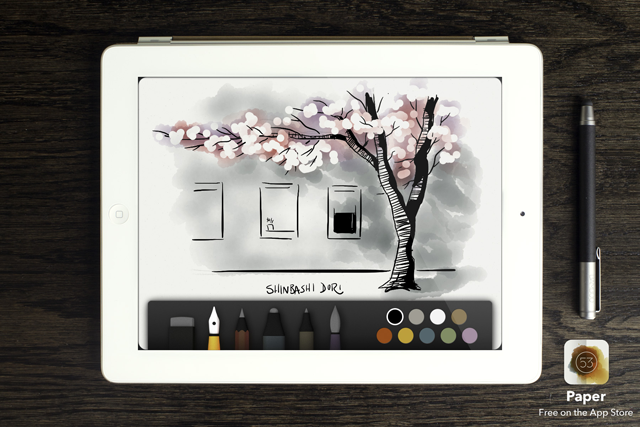By Lara McCormick. I was raised in a design culture where sketching was a given. The first stage of any design challenge is to sketch, by hand, as many thumbnails or concepts as possible. As students grow up in an increasingly digital realm, many of them dismiss this stage of design and jump right to the computer. In order to discourage this I strictly enforce a pencil to paper policy in my classes, even going as far as purchasing field notes for everyone to use.
A recent discussion thread among design educators about the topic seemed just too good to not share. Following are snippets from a dialogue from the AIGA design educators yahoo group on the subject.
The initial post that generated the conversation about getting students to sketch is from Jeff Fugua:
“In my 15 years of teaching design students, the biggest “battle” I’ve faced is getting them to thumbnail/sketch ideas before jumping onto the computer …Despite our emphasis on sketching, the students tend to drift more towards “composing” on their computers as they grow more comfortable with software. By the time I get them as seniors, many have abandoned sketching or spend an inadequate time in the process…
My goal is for students to see the value of sketching from both a creative and practical standpoint. I’m sure I’m not the only one to face this battle so thought it a good idea to bring it here.”
My initial reaction was that digital sketches were inferior to those done by hand. That’s what I teach my students. But some of the responses to Jeff’s inquiry made me look at this differently:
“I give my students the option of creating thumbnail sketches either by hand or on the computer, as long as they do them and generate multiple ideas in the process – not get locked into the execution of their idea. I find, especially with the iPad, that some students think better digitally than with sketching by hand. The goal is to concentrate on ideas, not method.” –Eileen MacAvery Kane
This post from Rebecca Hemstad prompted me to do an investigation of the options: “I find this an interesting discussion and I am curious in this whole ideology of “sketching by hand” and why, if I am using a pressure sensitive pen or even a brush on my iPad with an app like Paper – would it not constitute sketching by hand?”
Many of my students are already using their Wacoms to sketch and just starting to use their iPads. It occurred to me that I had never tried to sketch using my iPad. Because I require students to sketch by hand, I felt hypocritical not having fully investigated all the digital options for sketching currently available. So I ordered a brush and sat down to give it a try.

Image courtesy of Paper.
I used the sensu brushed I purchased with the Paper app, both recommended by a colleague. You can read more about the paper app through AIGA’s case study. The app was free but the brushes required to use with the app were 6.99. It took me an hour to install the apps (this includes me forgetting my apple password and having to reset it), watch a video, and complete a sketch. I felt irritated having to learn a new interface. I realized if I keep practicing it will become more comfortable and my sketches will improve, but where does one find the time for such luxuries? I’m sticking to my sketchbook.
Back to the discussion thread:
I have mixed feelings about this issue. As someone who (with very rare exception) no longer sketches off the computer myself, my authority for insisting on handwork is compromised…Early on, if you allow computer sketches, some students will constrain their vision to their (limited) technical ability, but that problem fades with time…Ideally, students can do both but ultimately students have to find methods that work for them and I’m disinclined to disqualify a tool arbitrarily, and even if I do, as you say it is difficulty to enforce. –Jandos Rothstein
As they are presented there is an “incompleteness” to a human’s sketch that provides opportunity for discovery, even productive misinterpretation that leads to other people providing new insight based on their interpretation of the designer’s sketches that the designer may have provided in the sketch without ever realizing it…It makes collaboration much more open and leads to unintended, often wonderful, changes in thought. Often some of the sketches that are incomplete or revisions to specific areas of the design lead us down paths of discovery we never would have discovered on our own. –Jonathan Walker
Eileen MacAvery Kane succinctly concludes “What this discussion really seems to be about is “the difference in generations and the ideation process…As educators we need to avoid myopic views, and that includes those that result from being of a different generation.”
What are your thoughts?